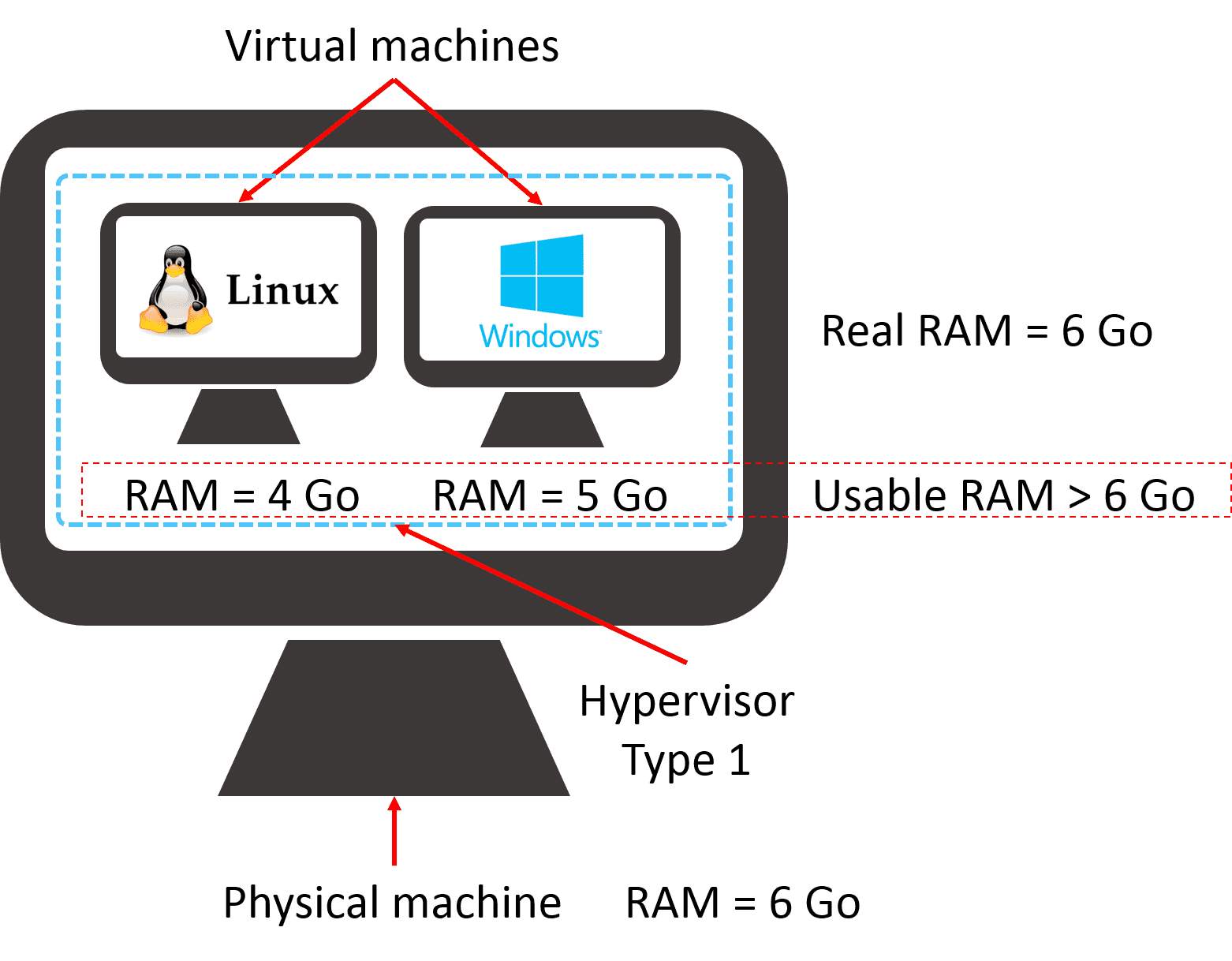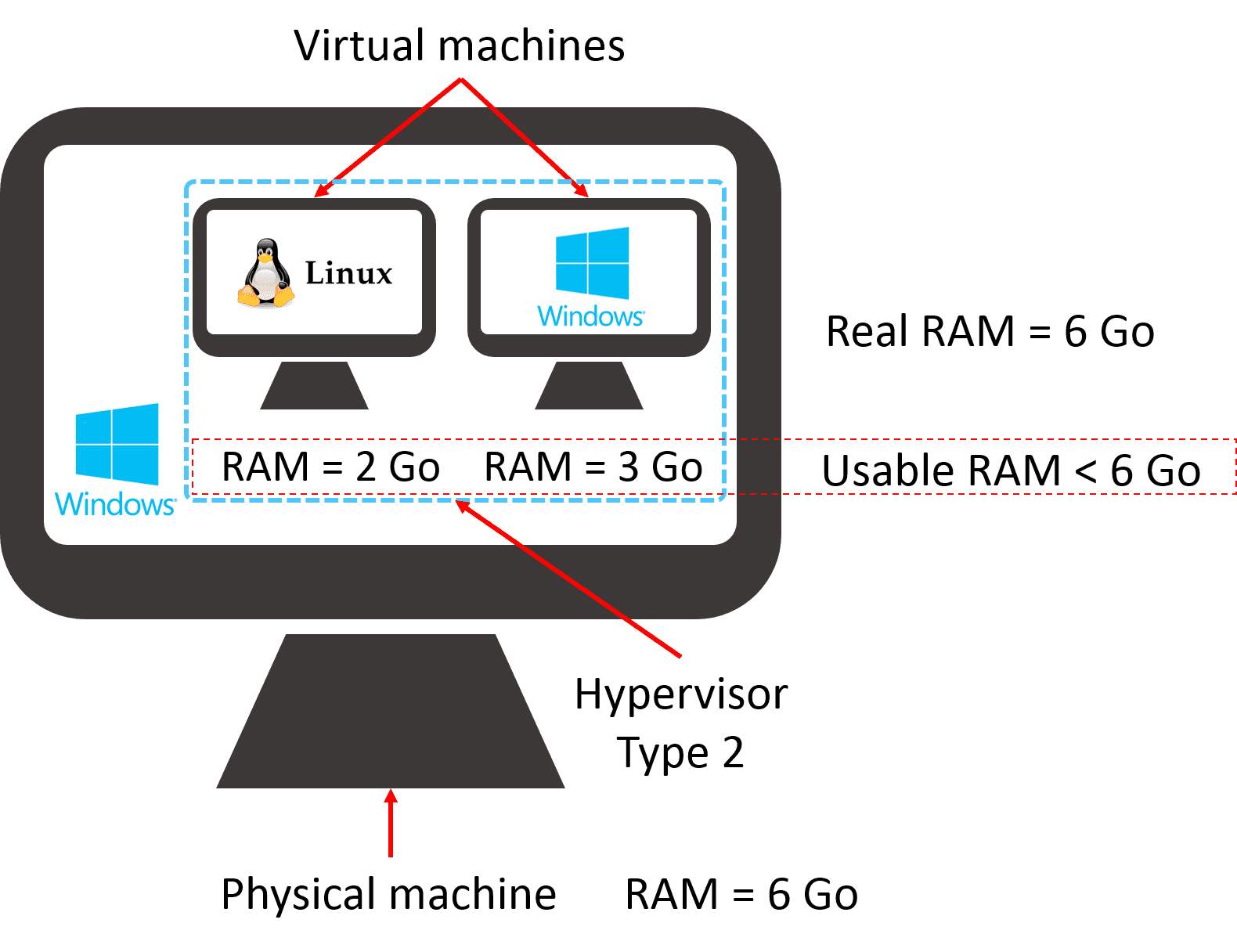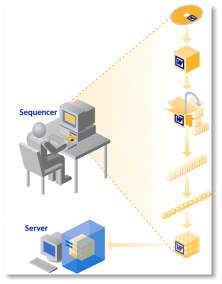Evaluation of Server Virtualization Infrastructure
| ✅ Paper Type: Free Essay | ✅ Subject: Computer Science |
| ✅ Wordcount: 2706 words | ✅ Published: 03 Nov 2020 |
Introduction
ICA. COM owns a domain based network and their datacenter is based on different physical server. For maintenance and upgrading of these physical server, the management is spending a lot of time and the money. Before attended to seminar, CEO realized that, in future it need to buy more hardware or physical server to offer IT services to the new and existing domain user. But after attending to the business seminar, CEO got ideas about the Green IT and virtualization technology. With the help of server virtualization ICA can save money, wore more efficiently. Server infrastructure administrator able to decide which server workload will run effectively in virtual machine and which server workload remain deployed in more traditional environment.
The main objective of this report is to present the current server infrastructure and show that how to implement application and server virtualization platform for ICA.COM domain. Also it will present the suitable type of hypervisor for ICA.COM. This report has provide the detail about how easy it would be manage virtual server infrastructure as compared to physical server, benefits of network and storage virtualization to manage the data and network services.
Task 1:
A hypervisor is a crucial piece of software that makes virtualization possible. A hypervisor, also known as a virtual machine monitor, is a process that creates and runs virtual machines (VMs). A hypervisor allows one host computer to support multiple guest VMs by virtually sharing its resources, like memory and processing. As per the scenario given, type 1 hypervisor is physical server. Hence, below given answer discuss about suitable virtual server hypervisor type for the ICA.COM as compared to physical server.
There are two types of hypervisors:
Type 1 hypervisor: It is a physical server. It run directly on the system hardware – A “bare metal” embedded hypervisor. A Type 1 hypervisor is proven in providing excellent performance and stability since it does not run inside Windows or any other operating system. Type 1 hypervisors are mainly found in enterprise environments.

Type 2 hypervisor: It run on a host operating system that provides virtualization services, such as I/O device support and memory management. Type 2 hypervisors don’t support over/dynamic allocation of RAM, so care is required when allocating resources to virtual machines. Type 2 hypervisors are typically found in environments with a small number of servers. (Yurtoğlu Nadir, 2018)

Performance of Type 2 Hypervisor: Hosted hypervisors essentially also act as management consoles for virtual machines, it can perform any task using the built-in functionalities. There is no need to install separate software on another machine to create and maintain virtual environment. It need to simply install and run a type 2 hypervisor any other application within OS. With it, it can create snapshots or clone your virtual machines, import or export appliances, etc.
Type 2 Hypervisor Operational factors, and support: You do need to be careful when allocating actual resources with this type of hypervisor. We should critical to keep in mind, so as to avoid over-allocating resources and crashing the host machine. Type 2 hypervisors are convenient for testing new software and research projects. It is possible to use one physical machine to run multiple instances with different operating systems to test how an application behaves in each environment or to create a specific network environment.
Cost: Many type 2 hypervisors are free in their basic versions and provide sufficient functionalities. Some even provide advanced features and performance boosts when it install add-on packages, free of charge.
Technical features and support:
- Higher server ability
- Cheaper operating costs
- Eliminate server complexity
- Increased application performance
- Deploy workload quicker
The common types of the Type 2 hypervisor are as:
1. VMware Workstation/Fusion/Player
It is a hosted hypervisor that runs on x64 versions of Windows and Linux operating systems. It enables users to set up virtual machines (VMs) on a single physical machine, and use them simultaneously along with the actual machine. There is a free-of-charge version. It may cost about $189. An operating systems license is needed to use proprietary ones such as Windows. Ready-made Linux VMs set up for different purposes are available from several sources.
VMware Workstation supports bridging existing host network adapters and sharing physical disk drives and USB devices with a virtual machine. VMware Workstation includes the ability to group multiple virtual machines in an inventory folder. VMware Workstation is a more robust hypervisor with some advanced features, such as record-and-replay and VM snapshot support.
VMware Workstation has four major technical feature and support
- running multiple different operating systems or versions of one OS on one desktop,
- Use in labs and demonstration purposes.
- It does come with a price tag, as there is no free version.
- For MacOS users, VMware has developed Fusion that is similar to their Workstation product. It comes with somewhat fewer features, but also carries a smaller price tag.
2. VMware Server
It is a discontinued free-of-charge virtualization-software server suite developed and supplied by VMware, Inc. It have fewer features than VMware ESX, software available for purchase, but can create, edit, and play virtual machines. It uses a client–server model, allowing remote access to virtual machines, at the cost of some graphical performance (and 3D support). It can run virtual machines created by other VMware products and by Microsoft Virtual PC. (Muller Al, 2005)
VMware Server can preserve and revert to a single snapshot copy of each separate virtual machine. VMware Server is a free, hosted virtualization hypervisor that’s very similar to the VMware Workstation.
3. Parallels Desktop for Mac:
It is software providing hardware virtualization for Mac computers with Intel processors. Parallels Desktop for Mac is a hardware emulation virtualization software, using hypervisor technology that works by mapping the host computer’s hardware resources directly to the virtual machine’s resources. Each virtual machine thus operates identically to a standalone computer, with virtually all the resources of a physical computer. Parallels Desktop for Mac is able to virtualize a full set of standard PC hardware, including,
- A virtualized CPU of the same type as the host’s physical processor,
- ACPI compliance system,
- A generic motherboard compatible with the Intel i965 chipset,
- Up to 64 GB of RAM for guest virtual machines,
- Up to 2 GB of video RAM (VRAM)
4. Oracle VM Virtual Box
Virtual Box hypervisor technology provides reasonable performance and features virtualize on a limited budget. Despite being a free, hosted product with a very small footprint, Virtual Box shares many features with VMware vSphere and Microsoft Hyper-V. Virtual Box is not resource demanding, and it has proven to be a good solution for both desktop and server virtualization. Operating system support. It can run software written for one operating system on another (say, Windows software on Linux) without having to reboot.
Task 2:
On the basis of the evaluation performed in TASK 1, Oracle VM Virtual Box make the most sense for given scenario. It is Functional and free software. It has passed through a few different hands but is now owned by Oracle. Its open-source, hence it’s free price tag, and has a large number of features to back it up. We describe virtual box as a full virtualization. It allows an unmodified operating system with all of its installed software to run in a special environment. This environment, called a “virtual machine”, is created by the virtualization software by introducing hardware components and certain features. The physical computer is then usually called the “host”, while the virtual machine is often called a “guest”. Most of the guest code runs unmodified, directly on the host computer, and the guest operating system “thinks” it’s running on real machine. (Vojnak Dejana, 2019)
The virtualization technique of Oracle VM Virtual Box are:
- Operating system support: It can run software written for one operating system on another (say, Windows software on Linux) without having to reboot.
- Infrastructure consolidation: Since the full performance of today’s computers is rarely needed full-time, instead of running many such physical computers, one can “pack” many virtual machines onto a few powerful hosts and balance the loads between them. This can save a lot of hardware costs: e.g. by consolidating many servers into a few.
- Testing and disaster recovery: Especially with the use of snapshots one can mess with a computing environment by running it as a virtual machine. If something goes wrong, one can easily switch back to a previous snapshot and avoid the need of frequent backups and restores.
Task 3:
Windows Deployment Services
With increased dependency on Information Technology (IT) solutions, organizations are constantly looking for better ways to automate the OS installation process on their systems. Windows Deployment Services (WDS) is a Microsoft technology that enables you to deploy Windows operating system on computers without using physical media such as Compact Disc (CD) or Digital Versatile Disc (DVD). WDS reduces overall installation time, by deploying Windows operating systems on multiple client systems simultaneously through network installation. WDS is a redesigned version of Remote Installation Services (RIS) and offers many advantages over its predecessor.
Advantages of Windows Deployment Services
• WDS uses standard Windows setup technologies including image-based deployment, virtual hard disk (.vhd and .vhdx) image files, Windows Preinstallation Environment (Windows PE), and Windows image (.wim) files
• WDS based installation is easy and efficient due to network-based installation
• WDS based installation reduces the cost and complexity of installation
• Support for mixed environments deployment
• Support for both server and client computers installation
Windows Deployment Service is effective to reinstall Virtual machines in several ways:
- Images stored on the Windows Deployment Services server can be customized.
- Images can be taken directly from the Windows DVD
- Will contain no software applications
- Will need the latest windows updates
- Can create customized images
- Operating system
- Drivers
- Windows updates
- Applications and programs
- Less administration required after deployment
- Save the templates can be reuse to deployment new Virtual machine.
Task 4:
Network virtualization combine hardware and software network resources and network functionality into a single, software based administrative entity. Network virtualization can play many role within ICA network.
Reduces the number of physical devices needed and power consumption: By using multiple servers and storage devices onto a single host machine, we can dramatically cut down on the space and costs required to run your network efficiently.
Automated Management: It plays important role in reducing the burden of physical network. It allows to easily automate network and security protocols, ensuring that they are applied across an entire network infrastructure.
Manage and prioritize traffic: In portions of a network that might be shared among different external networks.
It allows administrators to use performance, resources, availability, and security more efficiently.
Easily segment networks
Permits rapid change / scalability and agile deployment
Security from destruction of physical devices
Failover mode: defective disk simply switches to a backup on the fly, and the failed component can be repaired, while the system continues to run
Organizing your virtual network can be relatively easy, and immediately increase network efficiency.
Improved Scalability: Network virtualization provides a quick and easily scalable solution. It allows business to respond to market demands with agility, expanding the services demanded by a specific group of users or providing new services as your business evolves.
Similarly, Storage virtualization is the process of grouping the physical storage from multiple network storage devices so that it looks like a single storage device. Storage virtualization is all about from buying additional hardware and adding in storages in file. Storage virtualization helps to address problem of management of storage and data by facilitating easy backup, archiving and recovery tasks by consuming less time.
The main role of implementing storage virtualization are as follows:
Easy to move and shift around the data from one hardware to another hardware i.e. just moving or coping data or virtual file from one storage to another storage.
Easy to move and transfer, no installation, no mechanical heads to be fail. However, we will have core level of hardware on separate storage.
For setting goal with the network also you need to buy additional storages. All the server are posted in virtual environment and virtual switches to separate them
You can create one server network switch and there we can apply ACL (Access control list) which traffic should come in and which is denied. Similarly, which code is allowed and not allow all those sort of access control.
Improved storage management in a heterogeneous IT environment
Better availability and estimation of down time with automated management
Better storage utilization
It creates better workflows
It allows for the costs to become more predictable.
It allows for migrations to be performed quickly: It makes the migration of data faster because there are fewer barriers to movement present.
It allows more than one type of storage array: When using virtual storage, it is possible to assign more than one type of array to your SAN (Storage Area Network).
It is a cheaper option for storage: Storage virtualization reduces the amount of hardware that is necessary to achieve a needed storage capacity. That makes it easier and cheaper for the required infrastructure to be installed
It provides better access to your data: Resources are managing centrally instead, either with an on-site installation or through the Cloud.
Task 5:
Microsoft Application Virtualization or App-V is one of the most mature and popular technologies of this type available today. App-V takes a different approach to application delivery with app-v application are not installed but instead are virtual as such they can be streamed to users whenever they click on the application icon by separating the application layer from the operating system. App-V reduces application conflicts, brings patch and update management to a central location and accelerates the deployment of new application and updates. App-V also reduces the costs associated with testing and deploying applications under a new operating system such as windows 10. Regardless of form factor such as Laptop, PC, VDI Desktop. Thereby increasing the speed at which IT can deliver applications to users. Deploying Microsoft application virtualization can deliver many other immediate benefits to IT including reduced application packaging times to a fraction of the time, typically needed to create windows installer packages and reduced compatibility and regression testing by providing isolation that prevents application to application conflicts. App-v runs on either 32- or 64-bit windows platforms including terminal services enabling more applications per server and allowing users to access their virtual applications from anywhere. Customers who choose to leverage VDI in their environment can reduce their SAN storage space requirements through app-v shared cache capacity and with App-V 5.0 or other version you can accelerate deployment of office programs for delivery of key productivity enhancement and seamless users experience.
Application Virtualization works in following steps:
- App repackaged using Sequencer
- Installation monitored to capture resources
- All app resources stored in an app image (.SFT)
- App image placed on server for distribution
- App streamed to client over network
- App-V runs app in Virtual Environment (VE)
- App virtualization (V12N) layer handles resource requests
Application are Virtualized with the following steps:
- Sequencer captures resources created at installation time. E.g., files, registry, etc.
- Resources stored in an app image
- Image optimized for network streaming
- App image placed on server for distribution

Conclusion
This report presents the current server infrastructure and show that how to implement application and server virtualization platform for ICA.COM domain. Also, it presents the suitable type of hypervisor for ICA.COM. This report has also provided the detail about how easy it would be managed virtual server infrastructure as compared to physical server, benefits of network and storage virtualization to manage the data and network services. Similarly, above given answer include about the window deployment services and deployment of application virtualization as the infrastures administrators. Hence, virtualization helps the organization to save the physical hardware space, save the power and cooling cost, hardware and software installation cost and management.
References
- Figure 2f from: Irimia R, Gottschling M (2016) Taxonomic revision of Rochefortia Sw. (Ehretiaceae, Boraginales). Biodiversity Data Journal 4: e7720. https://doi.org/10.3897/BDJ.4.e7720
- Nadir Yurtoğlu – History Studies International Journal of History – 2018 http%3a%2f%2fwww.historystudies.net%2fdergi%2f%2fbirinci-dunya-savasinda-bir-asayis-sorunu-sebinkarahisar-ermeni-isyani20181092a4a8f.pdf
- Dejana Vojnak-Borislav Eordevic-Valentina Timcenko-Svetlana Strbac – 2019 27th Telecommunications Forum (TELFOR) – 2019 2:Task Performance Comparison of the type-2 hypervisor VirtualBox and VMWare Workstation
- Al Muller-Seburn Wilson-Don Happe-Gary Humphrey-Ralph Troupe – Virtualization with VMware ESX Server – 2005. VMware Under the Covers
Cite This Work
To export a reference to this article please select a referencing stye below:
Related Services
View allDMCA / Removal Request
If you are the original writer of this essay and no longer wish to have your work published on UKEssays.com then please click the following link to email our support team:
Request essay removal


